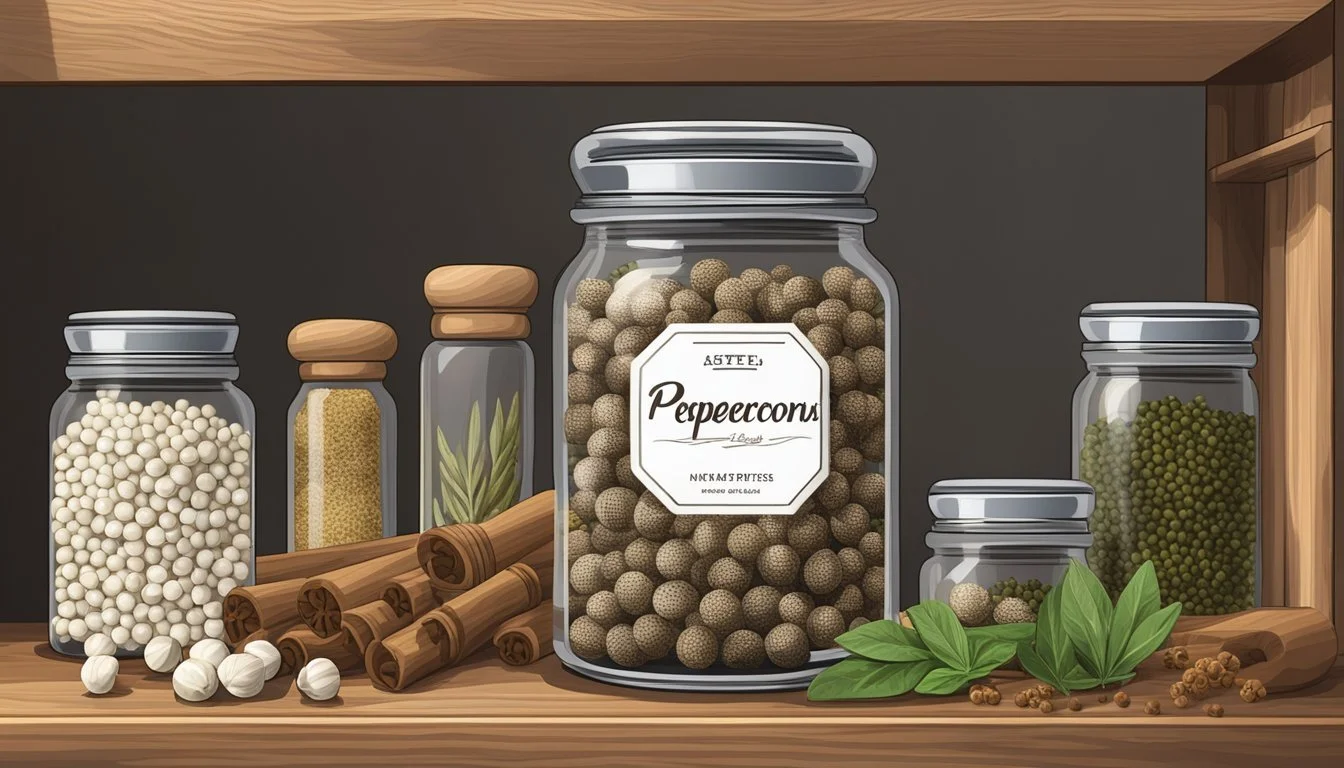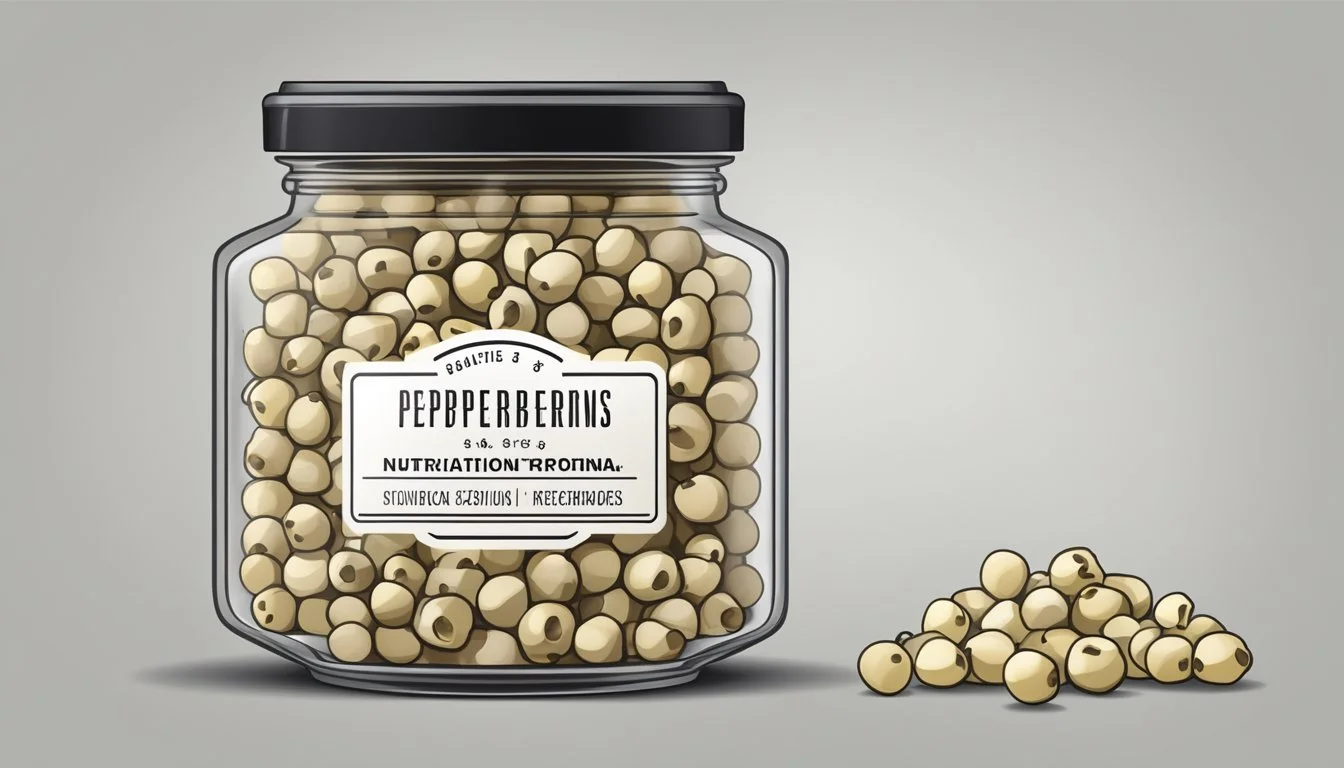How Long Do White Peppercorns Last?
Shelf Life and Storage Tips
White peppercorns (how long do white peppercorns last?) are a vital seasoning that complement a myriad of recipes, infusing dishes with a distinct, albeit milder, pungency than their black counterparts. Prized for their sharp flavor that underpins both the complexity and depth in cooking, these peppercorns are the inner seed of the pepper berry, with the outer hull removed. Such a process not only alters the peppercorn's color but also its flavor profile, making it a favorite in cuisines that prioritize color and a more gentle pepper note.
In terms of longevity, white peppercorns are known for their extended shelf life, a crucial factor for both home cooks and professional chefs who rely on the spice’s enduring flavor to remain consistent over time. Proper storage is key to maintaining the quality of white peppercorns; they should be kept in a cool, dry place away from direct sunlight to preserve their essence. When stored under optimal conditions, white peppercorns can last for several years.
However, like all spices, white peppercorns do have a finite shelf life. Their flavor can diminish over time, and it is often recommended to use them within six months to ensure the spice's pronounced taste is not lost. A loss of flavor, changes in color, or any off-smells are indicators that the peppercorns may have surpassed their prime and could compromise the desired outcome in culinary applications.
Understanding White Peppercorns
In this section, we unravel the specifics of white peppercorns, emphasizing their unique attributes, comparison with other varieties, and their role in culinary traditions across the globe.
Definition and Characteristics
White peppercorns are the matured berries of the Piper nigrum plant that have been soaked and their outer skin removed, revealing the inner seed. These peppercorns possess a milder flavor compared to their black counterparts. The characteristic of white peppercorns includes:
Appearance: Smooth and typically creamier or light tan in color.
Taste: Less complex, with an earthy flavor and a sharp heat.
Comparison With Other Peppercorns
While white peppercorns derive from the same plant as black and green peppercorns, processing methods dictate their differences:
Peppercorn Type Color Flavor Profile Outer Layer Black Dark Robust, pungent Intact Green Green Fresh, zesty Intact White Light Tan Milder, earthy Removed
Black peppercorns are harvested while still unripe and dried until they darken, maintaining a rich, assertive flavor. Green peppercorns are the unripe berries, often preserved in brine or vinegar for a fresher taste. White peppercorns, in contrast, are favored in cuisines for their inconspicuous appearance and subtle heat.
Historical and Cultural Significance
White pepper holds historical significance as a valuable spice, highly sought after since ancient times. Originating from the Malabar Coast of India and regions of Indonesia, its influences have permeated various cuisines, becoming an indispensable spice in European, Asian, and French dishes. In cultural contexts, white pepper is often used in light-colored dishes for both aesthetic and flavor purposes, illustrating its versatility in global culinary practices.
Culinary Uses of White Peppercorns
White peppercorns are highly valued in culinary applications for their sharp, earthy, and slightly fermented flavor. They serve as a versatile seasoning in a variety of dishes, where their distinct taste and aesthetic appeal are of paramount importance.
Flavor Profile and Pairing
White peppercorns possess a complex flavor that is sharp, earthy, and often described as having a less pungent aroma than black peppercorns. This allows them to blend seamlessly into dishes, enhancing flavors without overpowering. They pair exceptionally well with:
Light-colored dishes: to maintain aesthetic, such as cream sauces and white meats. (What wine goes well with white meat?)
Ingredients with subtle flavors: like fish, poultry, and vegetables, where they add depth without dominating the taste profile.
Popular Recipes and Dishes
The use of white peppercorns spans a diverse range of recipes and dishes. Notable examples include:
French cuisine: as a key ingredient in béchamel sauce and vichyssoise.
Asian cuisine: particularly in Thai and Chinese dishes, like hot and sour soup.
Marinades and Pickling: where their unique flavor infuses into the ingredients.
Soups, Salads, and Sauces:
Soups: A staple for clear broths and consommés, providing a subtle heat.
Salads: Ground white peppercorns can act as a garnish or be incorporated into dressings for an added kick.
Sauces: Integral for achieving the right balance of heat in white and cream-based sauces.
Grind and Application Techniques
The grind of the peppercorn affects texture and flavor release within cooking.
Coarsely Crushed: Ideal for robust textures in steaks or rustic sauces.
Finely Ground: Provides a more even distribution of flavor, excellent for soups and delicate sauces.
Application Technique:
Seasoning: Add during the cooking process to meld with other components.
Finishing: Lightly sprinkle on dishes before serving to preserve the peppercorns' distinctive taste.
Proper grinding techniques ensure white peppercorns deliver their best flavor, whether they're used as seasoning or a garnish.
Storing White Peppercorns
Effective storage of white peppercorns preserves their flavor and extends their shelf life. Understanding the right conditions can make a significant difference in maintaining the quality of the spice.
Appropriate Storage Conditions
White peppercorns maintain their potency best when stored in a cool, dry place away from direct light. Exposure to high humidity and temperature fluctuations can degrade the quality of peppercorns, lessening their pungent flavor and aroma. It is advisable to store them in an airtight container to prevent moisture and other contaminants.
Maximizing Shelf Life
For optimal preservation, whole peppercorns should be preferred over ground, as the shelf life of ground peppercorns is much shorter. Whole white peppercorns can last up to four years if stored properly, while ground pepper tends to lose its flavor more quickly, usually within a year. To ensure freshness, one might consider purchasing small amounts that can be used within a few months.
Whole peppercorns: Up to 4 years
Ground peppercorns: Up to 1 year
Freshness can also be retained by storing the peppercorns in a refrigerator, but this is generally not necessary if they are kept in an airtight container in a cool, dark, and dry place.
Signs of Deterioration
Peppercorns that have lost their color, emit a rancid smell, or have a dull taste are likely deteriorated. If the white peppercorns exhibit any of these signs, they should be discarded as their quality is compromised.
Color: Dull or faded
Smell: Rancid or off
Taste: Noticeably diminished or bland
Shelf Life of White Peppercorns
White peppercorns can maintain their quality for a significant duration if stored correctly. Their longevity varies based on factors like form—whole or ground—and storage practices.
Factors Affecting Longevity
The shelf life of white peppercorns is influenced by several factors:
Storage environment: An area with minimal heat, light, and moisture is ideal.
Container type: Air-tight containers help prevent exposure to atmospheric conditions that can accelerate spoilage.
Comparing Whole vs. Ground Peppercorns
Whole White Peppercorns generally have a longer shelf life compared to ground pepper. Here's a comparison:
Whole peppercorns can remain fresh for up to 3 to 5 years if stored properly.
Ground white pepper tends to lose its potency faster, usually within 1 year.
One should be aware that expiration dates are indicative, and peppercorns may lose their distinct aroma and flavor before reaching the said expiration, signaling that it's time to replace them.
Health and Nutritional Information
White peppercorns are not only a popular spice but also contain various nutrients that contribute to their health benefits. However, individuals should be aware of potential allergens and risks associated with their consumption.
Benefits of Consuming White Peppercorns
White peppercorns offer several health benefits due to their nutritional value. They are a source of:
Vitamins: such as vitamin K, vitamin C, and Vitamin A.
Minerals: including calcium, magnesium, and potassium.
The health benefits of white peppercorns include:
Digestive Health: They can stimulate digestive enzymes, which aids in the breakdown of food and improves gut health.
Antioxidant Properties: Compounds in white peppercorns may act as antioxidants, helping to combat oxidative stress in the body.
Anti-inflammatory Effects: They contain piperine, which has been shown to reduce inflammation.
Potential Allergens and Risks
White peppercorns themselves are not known to be common allergens, but they could potentially cause an allergic reaction in some individuals. Key points on allergens and risks include:
Allergy Considerations: While rare, some people may experience an allergy to white peppercorns, which could lead to symptoms like itching, swelling, or difficulty breathing.
Piperine Content: Piperine, though beneficial, may interfere with certain medications, and one should consult with a healthcare provider to prevent adverse effects.
When consuming white peppercorns, individuals should be mindful of these factors to ensure they can enjoy the spice without adverse effects.
Buying Guide for White Peppercorns
When purchasing white peppercorns, buyers should prioritize freshness and quality, which are pivotal for preserving the value and piperine content, the compound responsible for their pungency.
Selecting Quality Peppercorns
To ensure one is selecting peppercorns of a high standard:
Look for uniformity in size and color, as inconsistency can indicate lower quality.
Choose whole peppercorns over ground for a longer shelf life and to retain the peppercorns' full flavor and essential oils.
Freshness is denoted by a potent aroma and a heavy feel relative to size; avoid any that seem old or shriveled.
Understanding Packaging and Labels
Labels and packaging can be indicative of quality:
Sealed packaging protects from humidity and contaminants, maintaining freshness.
Opt for packaging that protects from light, which can degrade the peppercorns over time.
Verify the harvest date; the nearer to current currency, suggesting the peppercorns are less likely to have lost their essential qualities.
Locating Authentic Sources
To source authentic and high-quality white peppercorns:
Seek out reputable suppliers or specialty spice stores known for their spice quality.
Authentic peppercorns may come at a higher cost, much like gold in the commodities market, but their value translates into superior flavor and potency.
When possible, trace the source to ensure the peppercorns are directly coming from regions known for their production, such as the Western Ghats in India, ensuring they have not been compromised in quality.
Innovative and Alternative Uses
White peppercorns, though primarily used in cooking to add flavor, have found their place in other innovative applications ranging from home remedies to modern culinary experiments.
Beyond Culinary: Home Remedies and More
White peppercorns may play a role in home remedies due to their potential health benefits. They are thought to aid in digestion and feature in various traditional medicine practices. For instance, some people might consume a mixture of ground white pepper and honey to alleviate cough or cold symptoms.
Alternative uses also include white pepper in pain relief applications. Anecdotal evidence suggests that an application of white pepper powder mixed with oil could be used as a topical treatment to improve blood circulation and reduce muscle soreness.
Exploring Modern Culinary Discoveries
In the modern culinary realm, chefs are utilizing white peppercorns in innovative ways to create unique flavor profiles. Here are a few notable examples:
Infused Oils and Vinegars: White peppercorns can be steeped in oils or vinegars to impart a subtle, warm flavor that complements salad dressings and marinades.
Desserts: Surprisingly, the spice can be found in the dessert course, where finely ground white pepper adds an unexpected punch to chocolate creations and fruit compotes.
The exploration of white peppercorn's uses in both traditional home remedies and modern culinary practices reflects a dynamic approach to this versatile spice.









